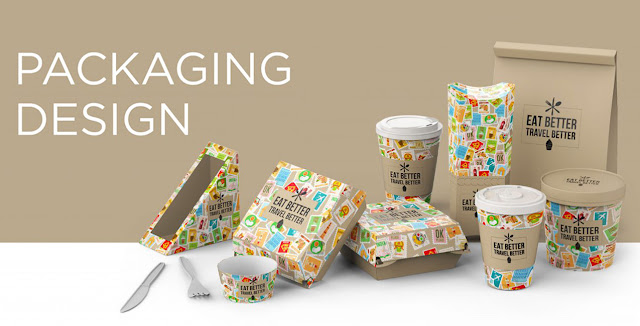Creating an Appetizing Food Packaging Design: A Recipe for Success
Food packaging design plays a crucial role in capturing consumers' attention, conveying brand identity, and enticing them to make a purchase. In this blog post, we will explore the key ingredients for creating an appealing and effective food packaging design that stands out on the shelves. Whether you're a food manufacturer, a startup entrepreneur, or a designer looking for inspiration, this guide will help you create packaging that makes a lasting impression.
Know Your Target Audience:
Understanding your target audience is the foundation of successful packaging design. Conduct thorough market research to identify their preferences, demographics, and purchasing habits. Tailor your design elements, colors, and typography to resonate with your target consumers, ensuring your packaging connects with them on an emotional level.
Emphasize Brand Identity:
Your food packaging should reflect your brand's unique personality and values. Develop a consistent visual identity that encompasses your logo, color palette, and typography. Align your packaging design with your brand story, using imagery and messaging that communicates your brand's promise and differentiates you from competitors.
Simplicity is Key:
When it comes to food packaging, simplicity often reigns supreme. Avoid cluttered designs that overwhelm consumers. Opt for clean, minimalist layouts that allow the product to be the hero. Use clear, concise information and intuitive visual cues to guide customers through the packaging, making it easy for them to understand what they're getting.
Showcase Appetizing Imagery:
One of the most powerful tools in food packaging design is high-quality imagery that showcases the product's appeal. Invest in professional food photography or illustrations that highlight the textures, colors, and flavors of your food. Consider incorporating lifestyle imagery that evokes the desired emotions and creates a connection between the consumer and the product.
Use Color Psychology:
Colors have a profound impact on human emotions and perception. Choose a color scheme that aligns with your brand identity and creates the desired response. For example, warm colors like red and orange can stimulate appetite, while cool colors like blue and green can evoke a sense of freshness or healthiness. Be mindful of cultural associations with colors when targeting specific markets.
Typography and Hierarchy:
Typography plays a significant role in conveying important information and setting the tone for your packaging design. Select fonts that are legible, complement your brand identity, and align with your target audience's preferences. Establish a clear hierarchy of information, ensuring that crucial details such as product name, key benefits, and nutritional information are easily noticeable.
Sustainable and Functional Packaging:
In today's eco-conscious landscape, sustainable packaging is highly valued by consumers. Consider using recyclable or biodegradable materials and communicate your commitment to sustainability on the packaging. Moreover, prioritize functional design elements that make it easy for consumers to open, store, and handle the product. Convenience and practicality are important factors in packaging success.
Conclusion:
Designing effective food packaging requires a thoughtful blend of creativity, market understanding, and strategic thinking. By focusing on your target audience, emphasizing brand identity, keeping the design simple and appealing, and incorporating functional and sustainable elements, you can create packaging that not only grabs attention but also nurtures a long-lasting relationship between consumers and your brand. Remember, your packaging is the first impression your product makes, so make it count!



Comments
Post a Comment